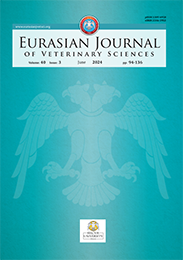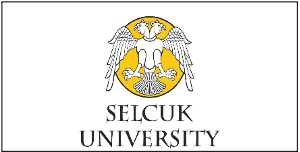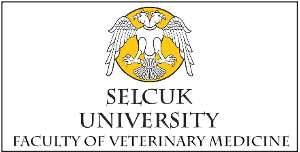| 2018, Volume 34, Number 2, Page(s) 065-070 |
| [ Summary (Turkish) ] [ PDF ] [ Similar Articles ] |
| Anatomic, morphometric and histological features of Glandula uropygialis in Aseel roosters and hens |
| Bestami Yılmaz1, İsmail Şah Harem2, İsmail Demircioğlu1, Gülsüm Özyiğit3, Faruk Bozkaya4 |
| 1Harran Üniversitesi Veteriner Fakültesi, Anatomi Anabilim Dalı, Şanlıurfa, Türkiye 2Harran Üniversitesi Veteriner Fakültesi, Histoloji ve Embriyoloji Anabilim Dalı, Şanlıurfa, Türkiye 3Uludağ Üniversitesi Veteriner Fakültesi, Anatomi Anabilim Dalı, Bursa, Türkiye 4Harran Üniversitesi Veteriner Fakültesi, Zootekni Anabilim Dalı, Şanlıurfa, Türkiye |
| Keywords: Glandula uropygialis, Aseel hen, Anatomy, Histology |
| Downloaded:1376 - Viewed: 3112 |
|
Aim: The present study was conducted to analyze the anatomic,
morphometric and histological structure of the glandula uropygialis
in Aseel roosters and hens.
Materials and Methods: In the study, a total of 8 (4 males, 4 females) glandula uropygialis belonging to adult Aseel hens and roosters were used. Topographic features of the glandula uropygialis were analyzed in situ. The morphometric measurements were conducted on the dissected glands. Trichrome staining method was used to determine the histological structure of the glands, and Periodic Acid-Shiff (PAS) staining techniques were implemented to determine the glycogen and neutral mucins in the glands. Results: It was found out that the glandula uropygialis was topographically located on the cauda base, between the fourth caudal vertebrae and pygostyl. In terms of morphometric parameters, there were no statistically significant differences between hens and roosters or right and left lobes. Histologically, it was found that the secretoric tubules forming the parenchyma of the gland were separated from each other by connective tissue and showed a radial arrangement beginning from periphery and ending at the central cavity. Conclusion: It was concluded that the histological and anatomical structure of the glandula uropygialis in Aseel roosters and hens showed considerable similarities with that reported in other birds species. |
| [ Summary (Turkish) ] [ PDF ] [ Similar Articles ] |





